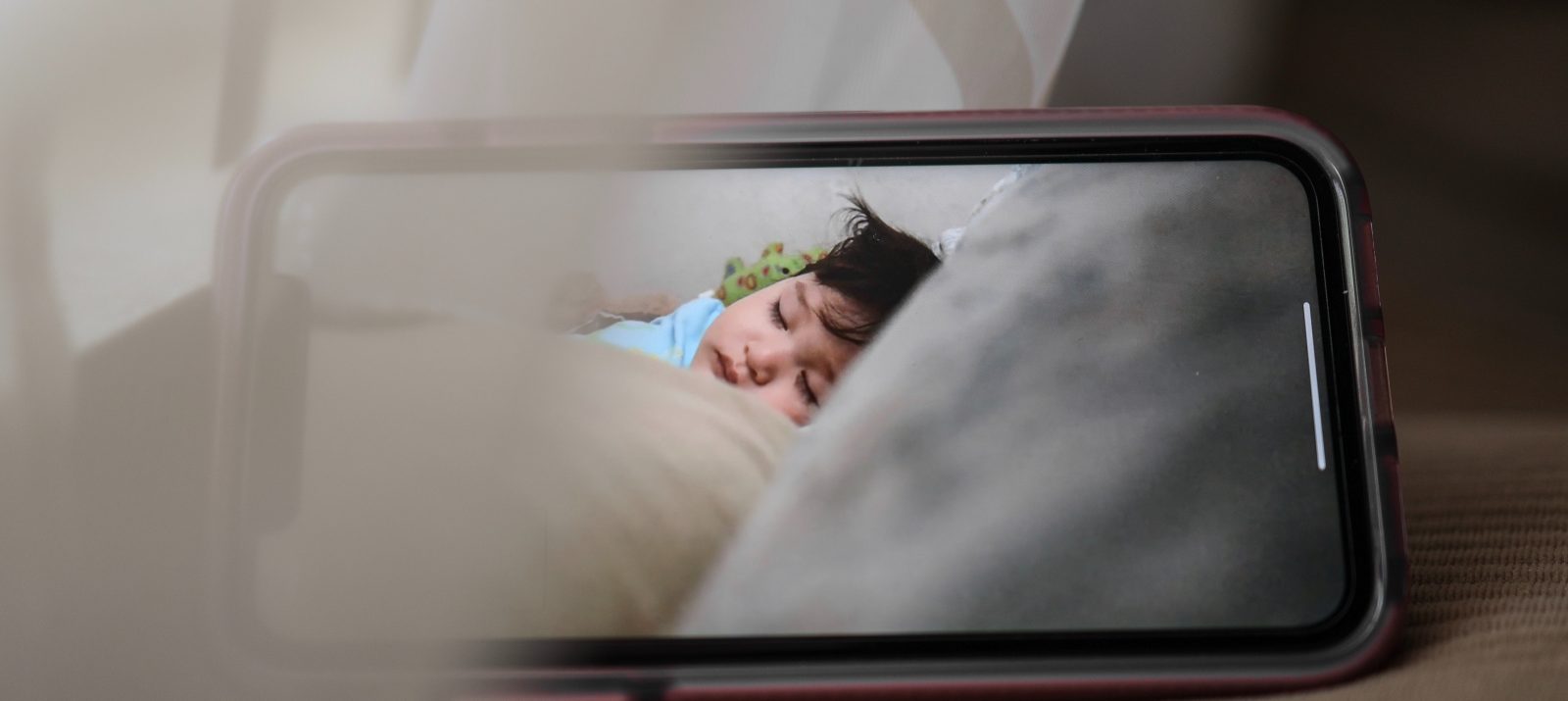
“Is our baby doing well?” – this question occupies many parents not only during pregnancy. Especially in the early days, they often feel the need to be there for the child around the clock and to have everything under control. For this, many parents are turning to technology and apps to monitor their babies and toddlers.
Baby monitors are part of the basic equipment of most families with small children. If the child is sleeping in another room, adults can hear via loudspeaker and/or video image if the child becomes restless, wakes up or cries. If you don’t want to purchase your own device for this purpose, need a longer range, or want to use one spontaneously while on the go, you can use baby monitor apps. With a smartphone or tablet, a device that offers all the necessary functions is always at hand: Microphone, speaker, camera and telephone or Internet connection.
There is a wide range of baby monitor apps to choose from. There are three types of apps:
We dedicate this article to the first two types of apps. Baby monitor apps feature a variety of functions, some of which are indispensable, others not. It should be possible to adjust the noise sensitivity so that the alarm does not go off with every gust of wind. A live video function and the night light allow visual verification of whether parental intervention is really required. Some apps provide information about the battery level of the baby device. Features like having lullabies played or talking to the baby can make it easier for some children to fall back asleep. Some apps log children’s sleep quality.
Compared to traditional baby monitors, baby monitor apps are significantly cheaper. There are free apps and many apps under five euros. Because they do not use radio, the ranges of baby monitor apps are much greater. However, the radiation exposure via WLAN or mobile network is significantly higher than via radio. WLAN and mobile networks are susceptible to interference, and seamless monitoring is hardly possible with fluctuating Internet connections. While the batteries and rechargeable batteries of baby monitors last a very long time, smartphones and tablets are quickly drained by the app constantly running in the background. Apps that record a child’s sleep pattern collect sensitive data.
If you want to use a baby monitor app:
What baby monitor apps don’t offer parents: the certainty that their child is still alive. The fear of diagnoses such as sudden infant death syndrome drives many mothers and fathers.
Respiratory monitoring systems sound an alarm if the child stops breathing for an extended period of time. Sensor wristbands, smart socks, sensor mats and clip-on sensors measure vital functions such as chest movements, oxygen levels, body temperature and heart rate of babies and toddlers while they sleep. The data is permanently transmitted via Bluetooth or WLAN to an app that warns parents when limit values are exceeded. The child’s vital signs are stored and can be shared with others.
Many sensor systems are combined with video and noise monitoring conventional baby monitors.
Monitoring systems with sensors can help parents reduce anxiety about diagnoses such as sudden infant death syndrome and help them rest at night.
Sensor mats are only suitable for healthy babies who sleep alone in bed. Children with health problems are professionally monitored medically. However, among the sensor systems, there is only one product that has medical approval. The clip-on sensor is not connected to a mobile device, but triggers a vibrating alarm to wake the child. If it is not awake, an alarm goes off, which can be heard via a baby monitor.
Do not rely solely on breath monitoring technologies, as they are fundamentally prone to failure. Frequent false alarms can unsettle parents and literally rob them of sleep.
In order for your child to sleep safely, you should pay attention to the entire sleep environment. Appropriate room temperature and safe bed and clothing design are important factors. Information on safe baby sleep is provided by the Federal Center for Health Education on its website kindergesundheit-info.de.
The best breathing monitoring won’t help if you, as a parent, don’t know what to do in an emergency. Take a baby and toddler first aid course and have the appropriate emergency numbers handy.
Children are growing up in a world full of media and technology. Every day they come into contact with different devices and media content. The bedroom is perhaps one of the few places not yet entirely affected by this. Sensor systems for breathing monitoring and baby monitor apps are constantly sending data, exposing young children to constant radiation. When using apps in conjunction with vital signs, there is the question of how to handle your child’s sensitive data. Babies and young children also have the right to privacy, which must be protected. Avoid sharing your child’s information with others via messenger or social media.
Carefully consider whether technologies and apps to monitor your child offer more benefits than costs.